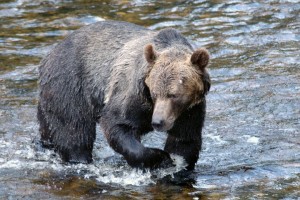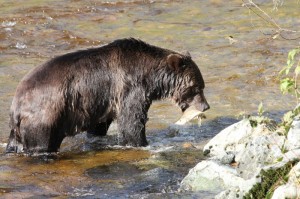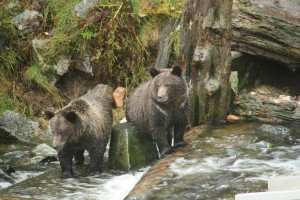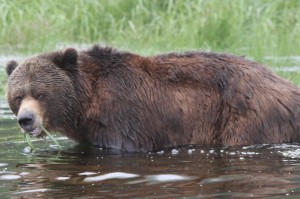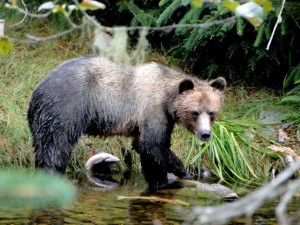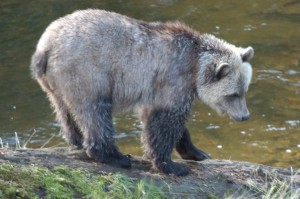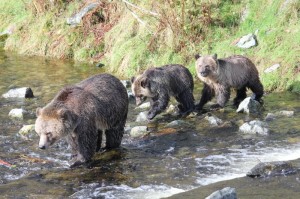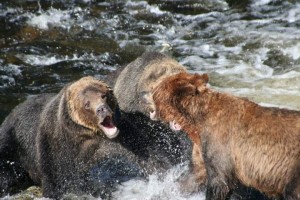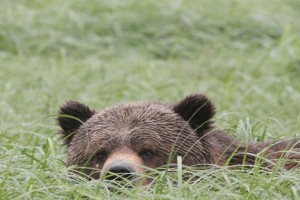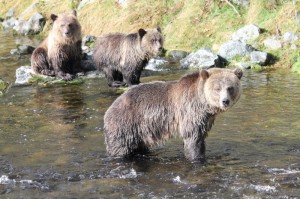
The tours from Grizzly Bear Lodge start in May and run through the start of October and this passage of time allows the guides an opportunity to watch the bears as they change over time. The cubs appear on the beach in late May looking like the posting on April 8th and progress to the larger cubs in the April 10th posting until by the end of their second summer they are like today’s posting. The abundance of salmon in the river and good mothers produce a high survival rate amongst the cubs of Knight Inlet’s Glendale River.
